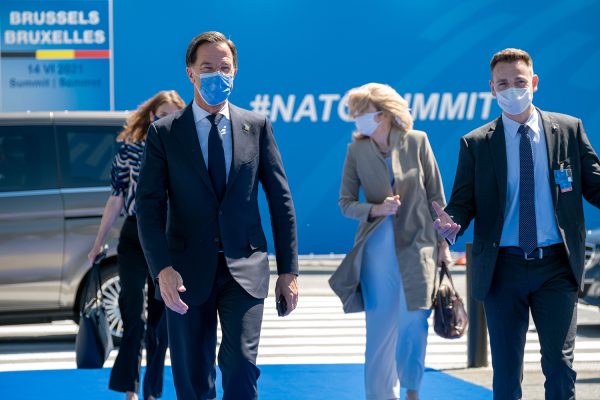
Nine months after parliamentary elections, parties in the Netherlands are finally ready to form a government.
Prime Minister Mark Rutte’s liberal VVD (of which I am a member) has completed negotiations with the left-liberal D66, the Christian democratic CDA and the Christian Union (CU). The same four parties formed his last government.
At 271 days, this was the longest government formation in postwar Dutch history.
Why did it take so long? And what’s next? I’ll explain.
Why did it take so long?
Other parties were reluctant to give Rutte a fourth term, even though his VVD won the election in March with 34 out of 150 seats.
When it was revealed Rutte had misspoken (critics would say “lied”) to a reporter about the content of the negotiations, his opponents smelled blood in the water. They tried to force him out. He survived a confidence vote by a majority of five.
The next hurdle was finding a combination of parties the VVD and D66, which placed second in the election, could both live with.
Rutte’s preference was to continue the outgoing coalition with Christian parties or add the right-wing JA21.
D66 was willing to govern again with the middle-of-the-road CDA, but preferred to swap the socially more conservative Christian Union (which opposes expanding euthanasia rights and legalizing cannabis) for Labor or the Greens.
The Labor Party and Greens, however, would only go into government as a bloc, and two left-wing parties was too much for VVD and CDA.
It took until September for the parties to accept that a renewal of the outgoing coalition — which had after all won the election — was their best option.
What’s next
- Tuesday: The four parliamentary parties review the deal their leaders have negotiated. They can request changes.
- Wednesday: The coalition agreement is published.
- Thursday or Friday: Parliament debates the outcome. The four parties, comprising a majority, are expected to name Rutte as “formateur“. This will empower him to form a cabinet.
- Christmas break: Rutte interviews prospective cabinet ministers. Security services conduct background checks.
- January: The government is sworn in by King Willem-Alexander. Rutte presents his new cabinet to parliament.
Policies
The Dutch got a preview of the next government’s policies when Christian Union leader Gert-Jan Segers forgot a copy of a draft coalition agreement on a train.
Here are the highlights:
Climate and energy
- Buy out farmers to reduce nitrogen pollution from agriculture.
- Cut greenhouse gas emissions 55 percent by 2030 compared to 1990.
- Subsidize district heating, green hydrogen and solar panels from a multibillion-euro climate fund.
- Study plans for nuclear power.
Foreign policy
- Deepen military integration with European NATO allies.
- Support the European Green Deal.
- Withhold EU subsidies from countries that violate the rule of law.
Housing
- Build one million homes by 2030.
- Give renters of social housing a right to buy.
- Probably eliminate rental tax for nonprofit housing corporations.
Labor law
- Mandatory unemployment insurance for the self-employed.
- Raise the minimum wage.
- Reduce sick pay from two years to one.
Migration
- Admit more refugees.
- Shorten asylum procedures.
- Tighten regulation of labor migration.
Social policy
- Abolish student debt.
- Replace child-care benefits with direct government financing of daycare centers.
